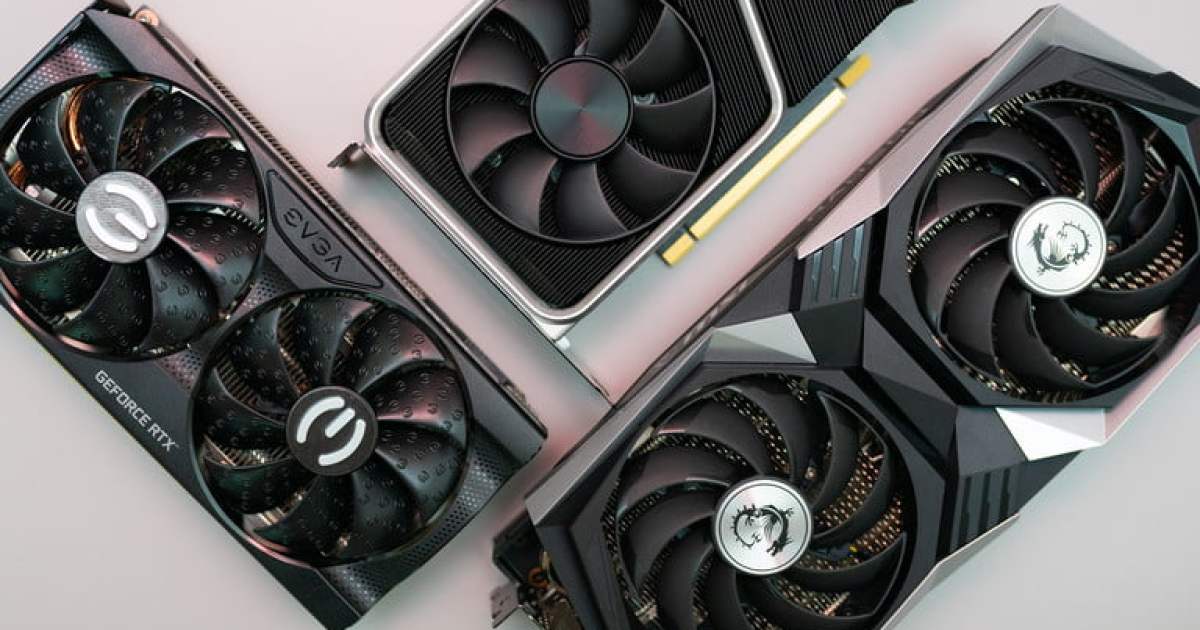Choosing the right graphics card can be a daunting task, especially with the competitive landscape of Nvidia and AMD in 2024. Both companies offer compelling options, making a simple price-to-performance comparison insufficient. This article dives deep into the current generation of GPUs from both giants, analyzing performance, features, pricing, and availability to help you make an informed decision.
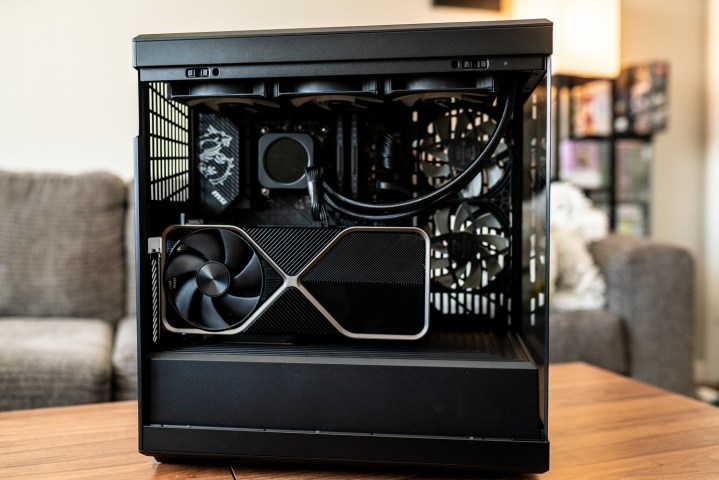 The Hyte Y60 with an RTX 4090 installed.Image: Jacob Roach / MaagX
The Hyte Y60 with an RTX 4090 installed.Image: Jacob Roach / MaagX
Nvidia’s Ada Lovelace architecture (RTX 40-series) and AMD’s RDNA 3 lineup are both mature, with no new additions expected. The next generation is anticipated towards the end of 2024 and early 2025.
Nvidia’s current lineup includes:
- RTX 4090
- RTX 4080 Super (replacing the RTX 4080)
- RTX 4070 Ti Super (replacing the RTX 4070 Ti)
- RTX 4070 Super
- RTX 4070
- RTX 4060 Ti 16GB
- RTX 4060 Ti 8GB
- RTX 4060
While the RTX 4080 and 4070 Ti are officially discontinued, some stock may still be available. Note the two RTX 4060 Ti variants with differing memory capacities.
AMD’s RDNA 3 lineup is more streamlined:
- RX 7900 XTX
- RX 7900 XT
- RX 7900 GRE
- RX 7800 XT
- RX 7700 XT
- RX 7600 XT
- RX 7600
The following table provides a rough comparison of equivalent GPUs from both brands based on performance:
| Nvidia | AMD |
|---|---|
| RTX 4090 | — |
| RTX 4080 Super | RX 7900 XTX |
| RTX 4070 Ti Super | RX 7900 XT |
| RTX 4070 Super | RX 7900 GRE |
| RTX 4070 | RX 7800 XT |
| — | RX 7700 XT |
| RTX 4060 Ti | — |
| — | RX 7600 XT |
| RTX 4060 | RX 7600 |
This comparison highlights certain performance gaps where a direct equivalent doesn’t exist within each brand’s lineup.
Pricing and Availability
 RX 7900 XTX installed in a test bench.Image: Jacob Roach / MaagX
RX 7900 XTX installed in a test bench.Image: Jacob Roach / MaagX
Current market prices are more relevant than MSRP. Generally, AMD GPUs offer greater affordability. The RX 7600 holds the title of the most budget-friendly current-gen GPU. Higher up, cards like the RX 7800 XT undercut the competing RTX 4070.
The RTX 4090 remains an outlier, with inflated prices due to high demand, making it a less attractive purchase currently. This, combined with generally lower prices across its lineup, gives AMD a significant advantage in pricing.
Performance
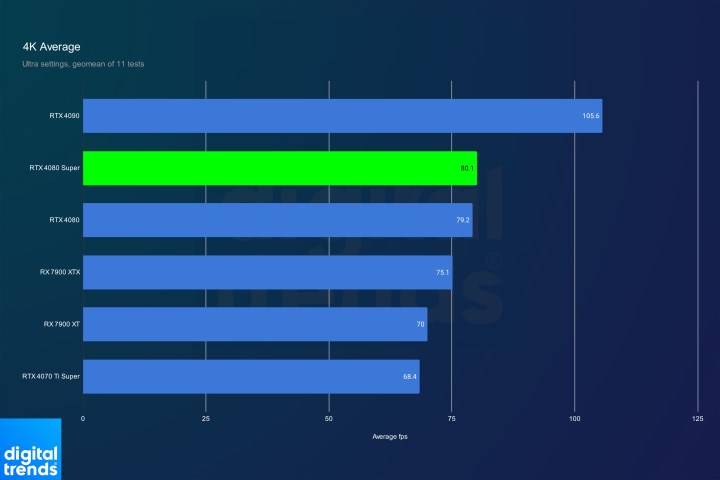 The average performance of the RTX 4080 Super at 4K.Image: Jacob Roach / MaagX
The average performance of the RTX 4080 Super at 4K.Image: Jacob Roach / MaagX
At 4K, Nvidia dominates the high-end with the unmatched RTX 4090. The RTX 4080 Super also outperforms its AMD counterparts. However, below the $1,000 mark, AMD cards like the RX 7900 XT offer superior price-to-performance.
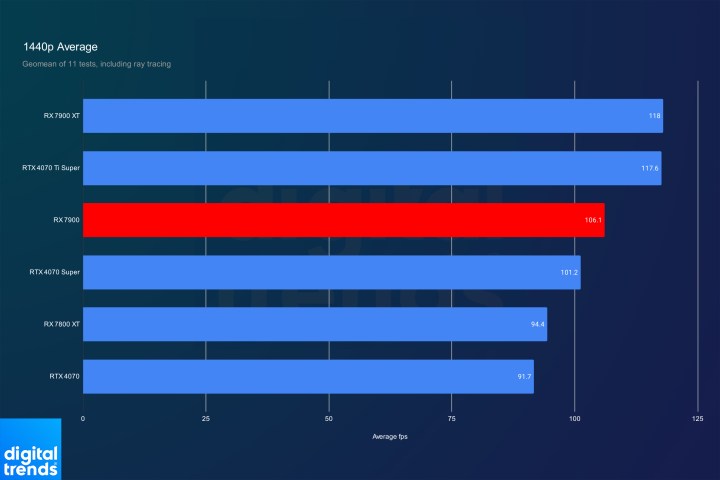 Average performance for the RX 7900 GPU at 1440p.Image: Jacob Roach / MaagX
Average performance for the RX 7900 GPU at 1440p.Image: Jacob Roach / MaagX
This trend continues at 1440p, with AMD cards like the RX 7900 GRE and RX 7800 XT providing better value than their Nvidia counterparts.
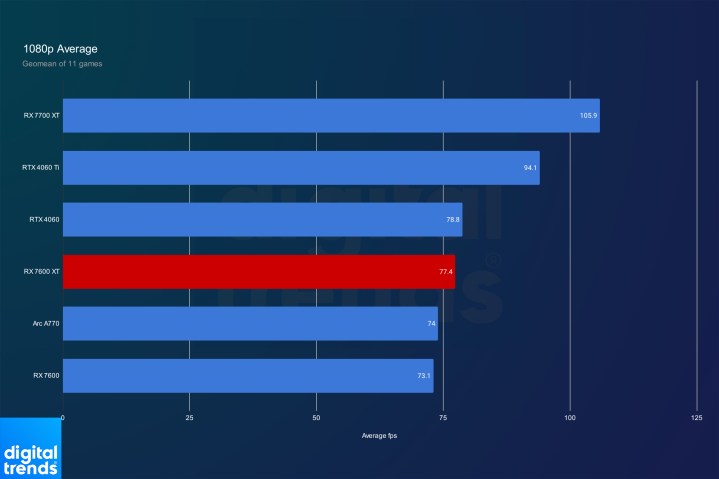 Benchmarks of the RX 7600 XT at 1080p.Image: Jacob Roach / MaagX
Benchmarks of the RX 7600 XT at 1080p.Image: Jacob Roach / MaagX
The situation reverses at 1080p, where Nvidia’s RTX 4060 and 4060 Ti provide a better balance of performance and price compared to AMD’s offerings. Overall, AMD excels in the mid-range, offering better performance per dollar for 1440p and lower-end 4K gaming.
Ray Tracing and Upscaling Technologies
Nvidia maintains a lead in ray tracing performance, especially in demanding titles. While AMD has made significant improvements, Nvidia GPUs handle complex ray tracing implementations more effectively.
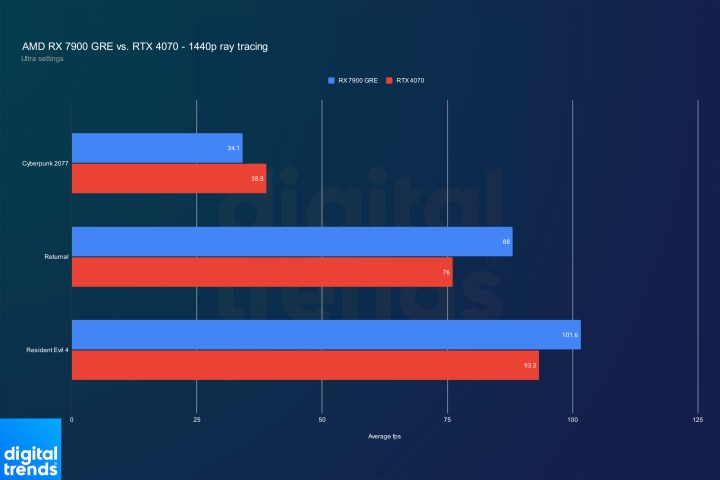 Ray tracing performance for the RX 7900 GRE and RTX 4070 at 1440p.Image: Jacob Roach / MaagX
Ray tracing performance for the RX 7900 GRE and RTX 4070 at 1440p.Image: Jacob Roach / MaagX
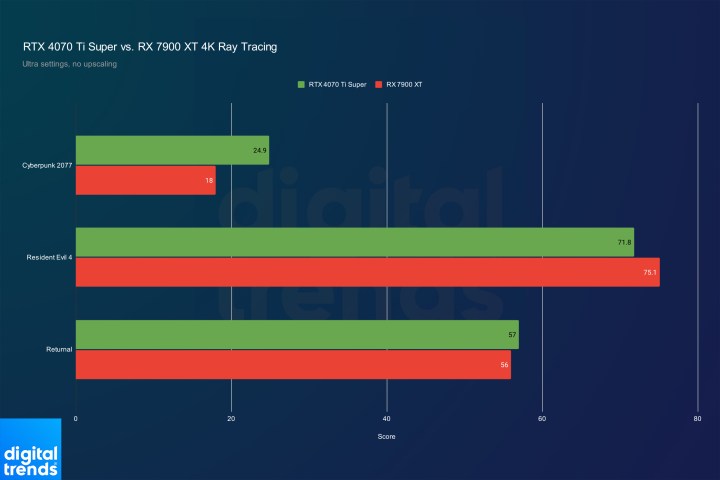 Ray tracing benchmarks for the RX 7900 XT and RTX 4070 Ti Super at 4K.Image: Jacob Roach / MaagX
Ray tracing benchmarks for the RX 7900 XT and RTX 4070 Ti Super at 4K.Image: Jacob Roach / MaagX
In upscaling technologies, Nvidia’s DLSS offers superior image quality and wider game support compared to AMD’s FSR. While FSR is open-source and works across various hardware, DLSS leverages AI for better results and includes features like Frame Generation.
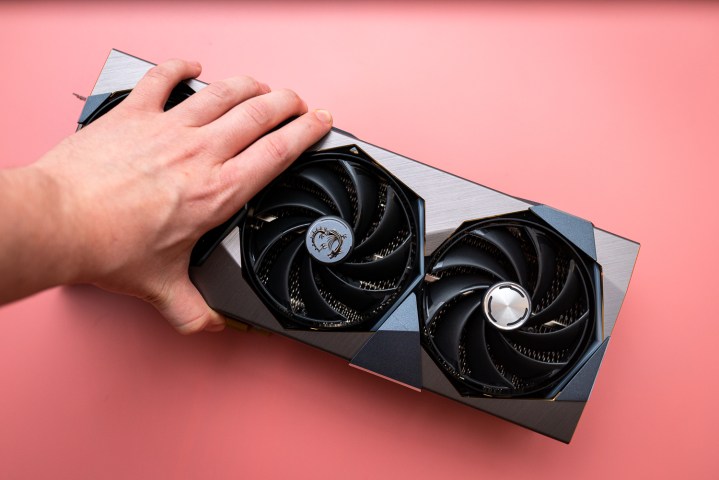 A hand grabbing MSIImage: Jacob Roach / MaagX
A hand grabbing MSIImage: Jacob Roach / MaagX
 DLSS, FSR 2, and XeSS in Hogwarts Legacy.Image: Jacob Roach / MaagX
DLSS, FSR 2, and XeSS in Hogwarts Legacy.Image: Jacob Roach / MaagX
Software and Drivers
Both Nvidia and AMD offer robust software suites with similar features for gameplay recording, performance monitoring, and driver management. Nvidia’s revamped Nvidia App and AMD’s Radeon Software provide comparable functionality, making it a tie in this category.
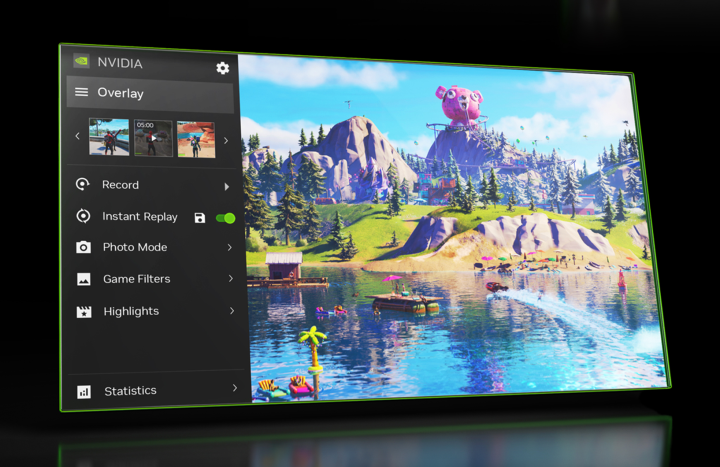 A screenshot of the overlay using the Nvidia app.Image: Nvidia
A screenshot of the overlay using the Nvidia app.Image: Nvidia
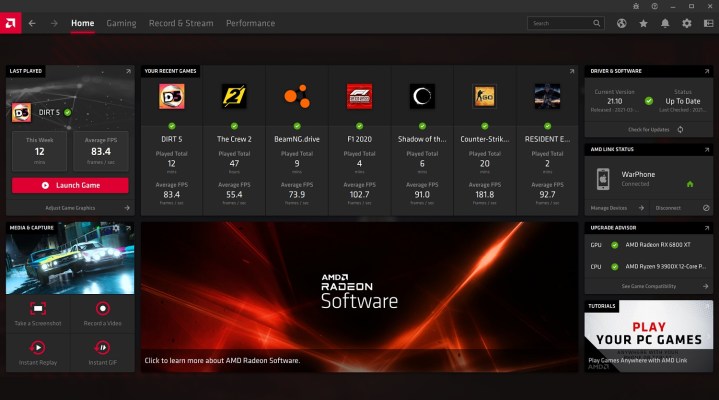 Home screen in AMD Radeon Software.Image used with permission by copyright holder
Home screen in AMD Radeon Software.Image used with permission by copyright holder
Mobile GPUs
Nvidia holds a stronger position in the mobile GPU market, with greater availability and generally better performance due to features like DLSS and ray tracing.
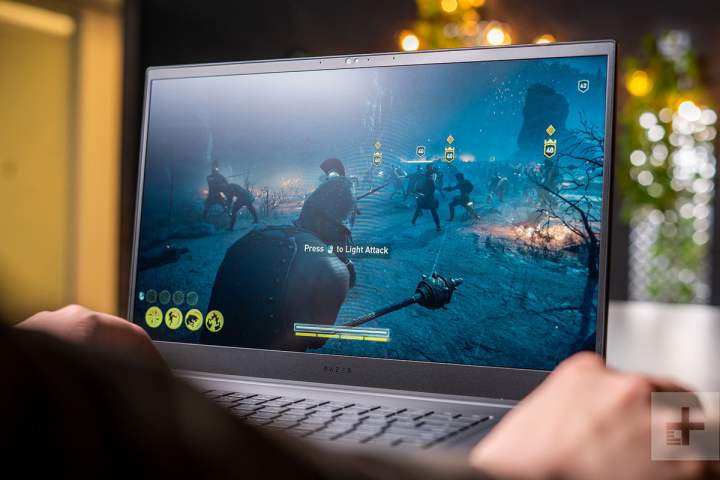 Image used with permission by copyright holder
Image used with permission by copyright holder
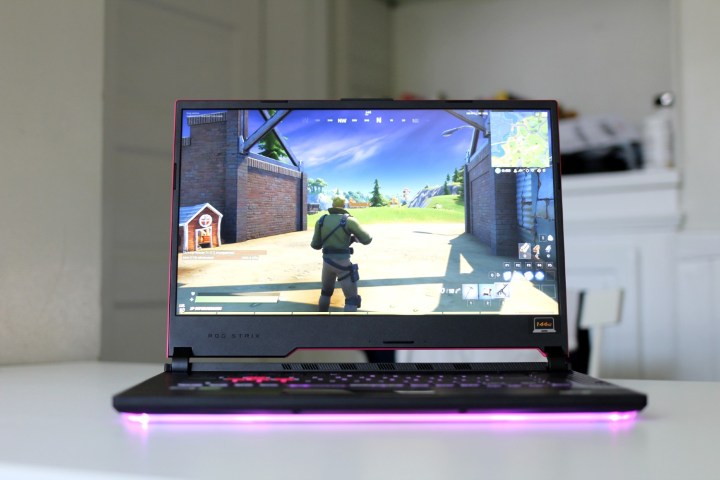 Asus ROG Strix G15 running Fortnite.Image used with permission by copyright holder
Asus ROG Strix G15 running Fortnite.Image used with permission by copyright holder
Conclusion
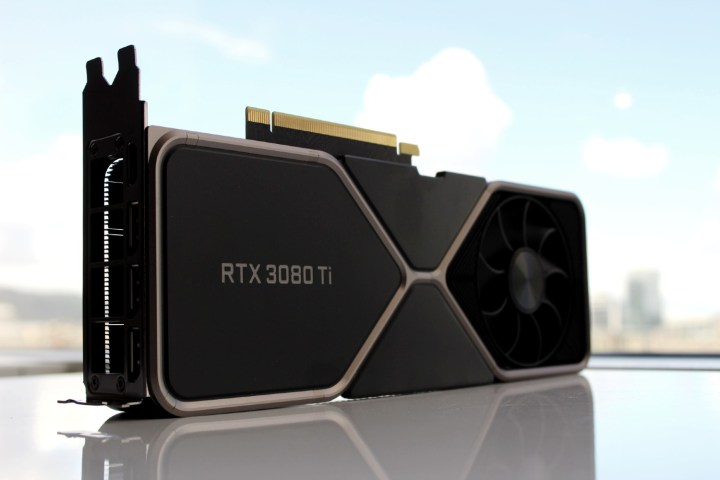 RTX 3080 Ti in front of a window.Image: Luke Larsen / MaagX
RTX 3080 Ti in front of a window.Image: Luke Larsen / MaagX
While AMD offers compelling value and strong rasterized performance, especially in the mid-range, Nvidia’s superior features like DLSS and ray tracing, along with a broader mobile presence, give it the edge in 2024. The best choice ultimately depends on your individual needs and budget. If you prioritize raw performance and affordability, AMD is a strong contender. However, if you value features and cutting-edge technology, Nvidia remains the leader.



